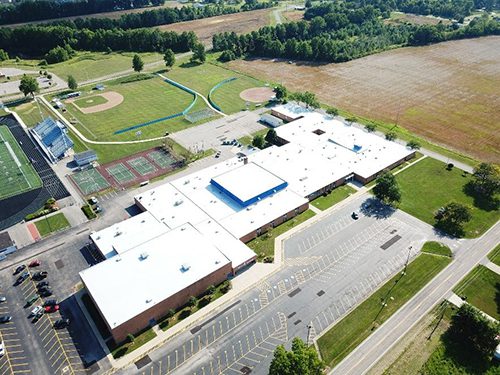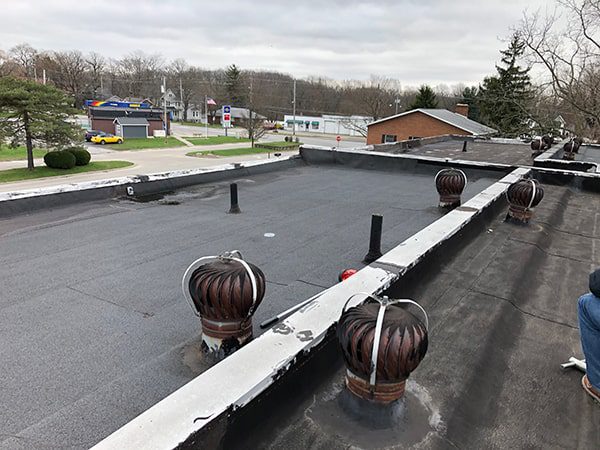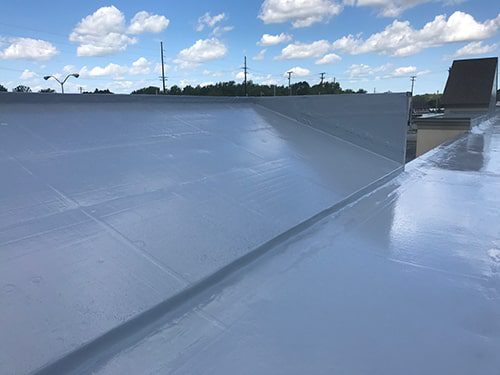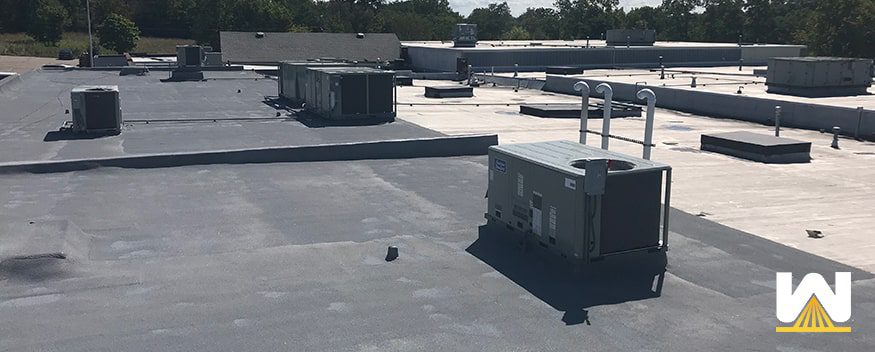So, you’re a property management company. One of your main objectives is to keep the roof leak-free so that it doesn’t create an issue with tenants.
Let’s say that your roof is 25+ years old and it’s time to install a new roof.
What roofing system should you install?
Metal, TPO, EPDM, Spray Foam?
In this article, you’re going to learn three things:
- How the current condition of your roof can influence the best roof system to install
- How the difficulty of the installation can influence the best roof to install
- How lifetime cost can influence the best roof to install
At West Roofing Systems, we’ve been around since 1979. We specialize in spray foam roofing systems and sometimes we aren’t the best roofing option.
So, what is the best roof for a property management company? The short answer is that it depends on a lot of factors.
How so?
Let’s say that the roof over your strip mall is flat and has very little penetrations. In this case, a single-ply roof install is easy because it can be rolled out without any interference from penetrations, this may be your best bet.
The same scenario, but let’s say there are two roofing systems already installed. Per building code, you would need to remove at least one roofing system before installing another one. Removing an entire roofing system is costly. In this case, installing a roof coating system (not considered another roofing system per code) could be the most cost-effective option.
The same scenario, but let’s say there are firewalls, pipes, HVAC units, and skylights on your roof. Since the installation using a single-ply system would be difficult (because you’d have to custom cut around every penetration), perhaps a spray polyurethane foam roof would be the most cost-effective option.
As you can see, the best roof system for your property management facility greatly relies on the current condition of your roof.
Here are the three factors that will help you determine the best roof for your property management company
#1 – What is the current condition of your roof?
The first thing any roofing contractor will do is ask you some questions about your roof, such as:
- How old is the roofing system?
- How severe are the leaks?
- Have any repairs been done?
These questions will help determine if a brand-new roofing system is beneficial, or if a re-roof or roof restoration is the best option.
Then the contractor will perform a roof inspection. They are looking for answers to questions such as:
- How much of the roof’s insulation is wet?
- How many roofing systems are on the roof?
- What is the condition of the seams, flashings, and deck?
If there are two (or more) roofing systems already installed, per building code, to install a new roofing system, you must remove one (or both) of the existing roof systems.
An unknown option is to restore your roof with a silicone coating.

Some roofs are in decent condition but have two roofing systems already installed. It might be cost-effective to add coating over the existing roof and avoid a complete tear-off?
#2 – What is the difficulty of the roof installation?
A popular “detail” on the roof of some property management companies are firewalls. Firewalls are installed to resist fires from spreading from one unit to another.

Installing a roofing system around a firewall is difficult. Custom cutting, termination metal, and sealants might have to be used to install a single-ply roofing system.
A spray polyurethane foam roof is fluid-applied and self-adhering, meaning it can conform to any penetration.
Other penetrations that are difficult to roof around are:
- Pipes
- Drains
- Parapet walls
- HVAC units
- Skylights
Another difficulty is the number of roof levels there are.
Some strips malls have a large facade, like this:

Some roofing systems can be installed easily around roof levels and transitions and some cannot. It’s best to get a contractor on your roof so they can determine how easy (or difficult) the installation can be.
#3 – What is the lifetime cost of each system?
Here are the approximate costs of commercial roofing systems per square foot:
- EPDM (single-ply) – $5-$10
- TPO (single-ply) – $5-$10
- Metal – $10-$15
- Spray foam – $5-$10
- Silicone roof coatings – $3.50 – $7
NOTE: there are many variables to cost, such as roof height, number of penetrations, amount of saturated insulation, the length of warranty you’re seeking, etc.
Each roofing system has its own projected lifetime, but what happens once that’s over?
On traditional roofing systems, once their life expectancy is over, they will need to be ripped off, transported to a landfill, and a new roof system will need to be installed. This is very costly.
A roofing system that most don’t know about, the spray foam roof, can be renewed instead of ripped off.
How does this happen?
Let’s say that you got a spray foam roof, which came with a 20-year warranty. The warranty length for a spray foam roof is determined by the thickness of the coating that protects the foam.
NOTE: This is one weakness of a spray foam roofing system, it needs a protective coating, otherwise the UV rays from the sun will degrade the foam.
Here is the length of warranties by coating thickness:
- 10-year warranty has 20 mils of coating
- 15-year warranty has 25 mils of coating
- 20-year warranty has 30 mils of coating
So, in year 1, your spray foam roof would have 30 mils of coating. In year 20, the coating will naturally wear away to around 7-8 mils.
In year 20, a spray foam contractor would repair any areas (if necessary), power washes the roof clean, and then installs enough coating to bring it back to the original thickness. In this example, that was 30 mils.
Why is this important for lifetime cost?
Cleaning and installing more coating only costs 1/2 to 1/3 of the original cost of the installation. If you need to remove, transport, and install a new traditional roofing system, it will cost 100% of the original installation.
Why is this important for property management facilities?
Property management companies generally are invested for the long term. They want to own and rent out a property for many, many years. With spray foam being renewable, it becomes a cost-effective option.
What are your next steps?
Your next step should be to call a few roofing contractors and get them onto your roof. They will do their inspections and give you a few options on what they feel is the most cost-effective solution for you.
Maybe it’s single-ply, maybe it’s spray foam, maybe it’s simply making a few repairs and installing coating over the existing roof?
Then once you get a few proposals, you can make your choice.
The best roof for a property management company depends on the current condition of the roof and what your plans/goals are moving forward.


